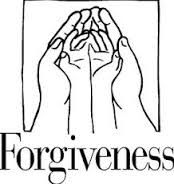We also encounter Jesus in the sacraments of the church, the sacraments of faith. In “The Light of Faith,” Pope Francis describes the sacraments as a “special means” for passing down the fullness of “our encounter with the true God, a light which touches us at the core of our being and engages our minds, wills and emotions, opening us to relationships lived in communion.”
There is no better story than the healing of the paralytic (Mk 2:1–12) to give us a scriptural basis for the sacrament of reconciliation—an encounter, in our day, with the healing Jesus. Each of us can picture ourselves paralyzed in different ways from the mystery and debilitating effects of sin at different times in our lives. Each of us needs healing in our lives as did the paralyzed man in the Gospel story.
Mark describes a remarkable scene: a dramatic disruption of Jesus’ sermon in his house. Imagine we are all packed in the living room of his house when suddenly debris begins to shower down on us, a human-sized hole opens in the terraced roof and, lo and behold, a stretcher with a person strapped to it begins to descend slowly. An ingenious, persistent and bold quartet are determined to bring this paralyzed person to Jesus for physical healing.
What happens initially is certainly not what they had in mind. Without asking the paralytic any questions about his  condition or the state of his soul, Jesus immediately says: “Child, your sins are forgiven.” What was planned by these four men as a pilgrimage for a physical healing turns suddenly into the healing of his sins. It was not until later in the story, after some of the scribes challenge his authority to forgive sins, that Jesus finally turns to the paralytic and says, “Rise, pick up your mat, and go home.”
condition or the state of his soul, Jesus immediately says: “Child, your sins are forgiven.” What was planned by these four men as a pilgrimage for a physical healing turns suddenly into the healing of his sins. It was not until later in the story, after some of the scribes challenge his authority to forgive sins, that Jesus finally turns to the paralytic and says, “Rise, pick up your mat, and go home.”
Jesus first forgives the paralytic’s sins and only later heals the physical paralysis. In a way, Mark challenges us to see sin itself as a kind of spiritual paralysis. Such paralysis, not unlike a physical paralysis, cannot be healed without the help of someone else. A skilled doctor, with the aid of attendants who bring the person to him, heals the person. In this case, friends bring the paralyzed man to a healing father who is able to diagnose and heal the underlying spiritual malady, the malady of sin.
This healing ministry of Jesus continues in our day. We call it the sacrament of reconciliation, a centuries-old citadel of healing and forgiveness. When we pull back the velvet curtain or open the door to the reconciliation room, think of Jesus healing the paralytic at Capernaum. Each one of us, from time to time, lies paralyzed on a mat in need of healing. We need a change of heart, metanoia—a movement toward God.
The sacrament of reconciliation is a personal encounter with Jesus, the same Jesus who spent a great part of his life on earth healing others and forgiving sins. Sins cannot be faxed, sent by email or delivered by Federal Express. Rather, the person has an individual encounter with Jesus in the person of the priest, which includes a confession of sin, an act of contrition and the intention to amend one’s life and do prescribed penance. Could there be a more personal encounter with the crucified, forgiving and healing Jesus?
 In SS. Peter & Paul’s Church every Saturday after the 9.30am Mass.
In SS. Peter & Paul’s Church every Saturday after the 9.30am Mass.
Confessions on request from one of the Priests at any time.

